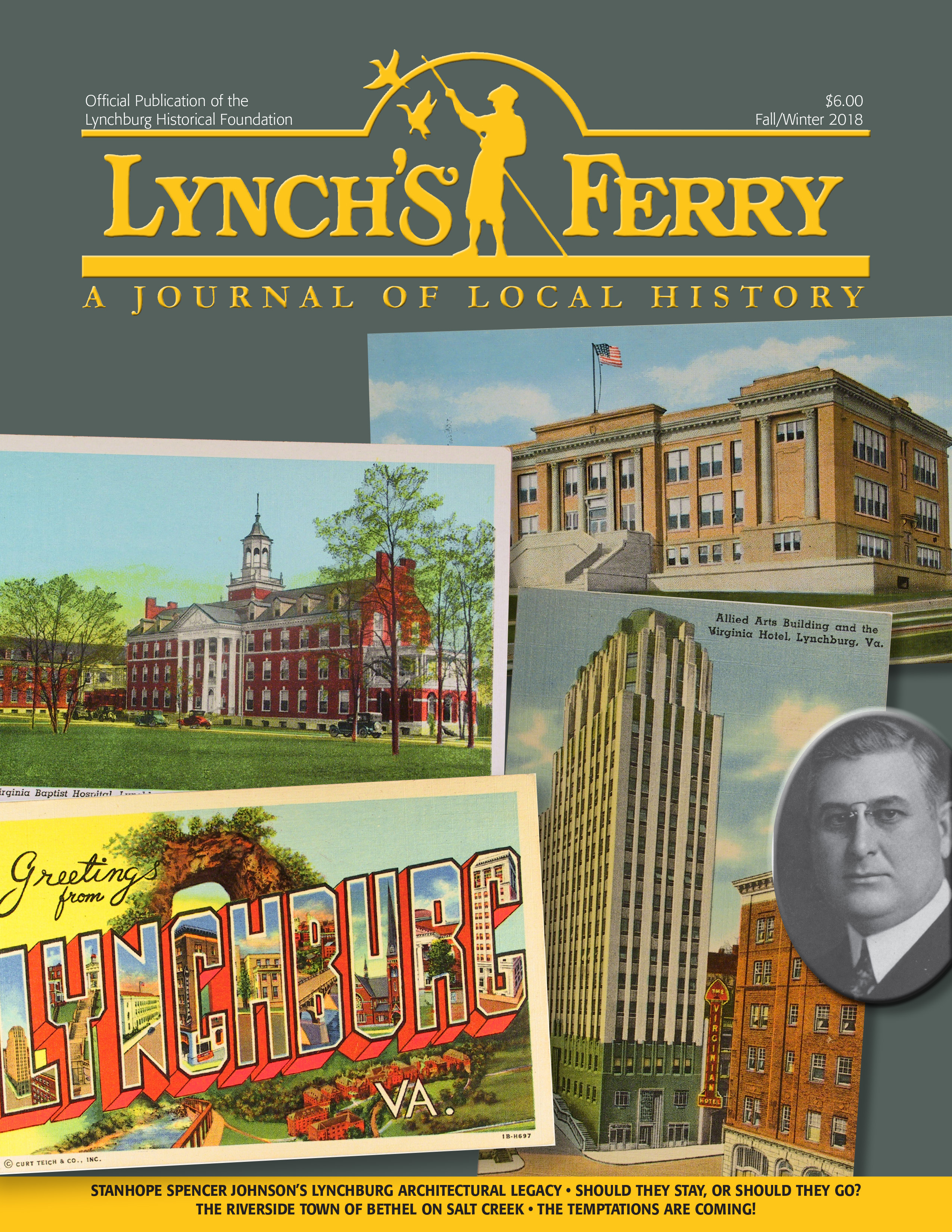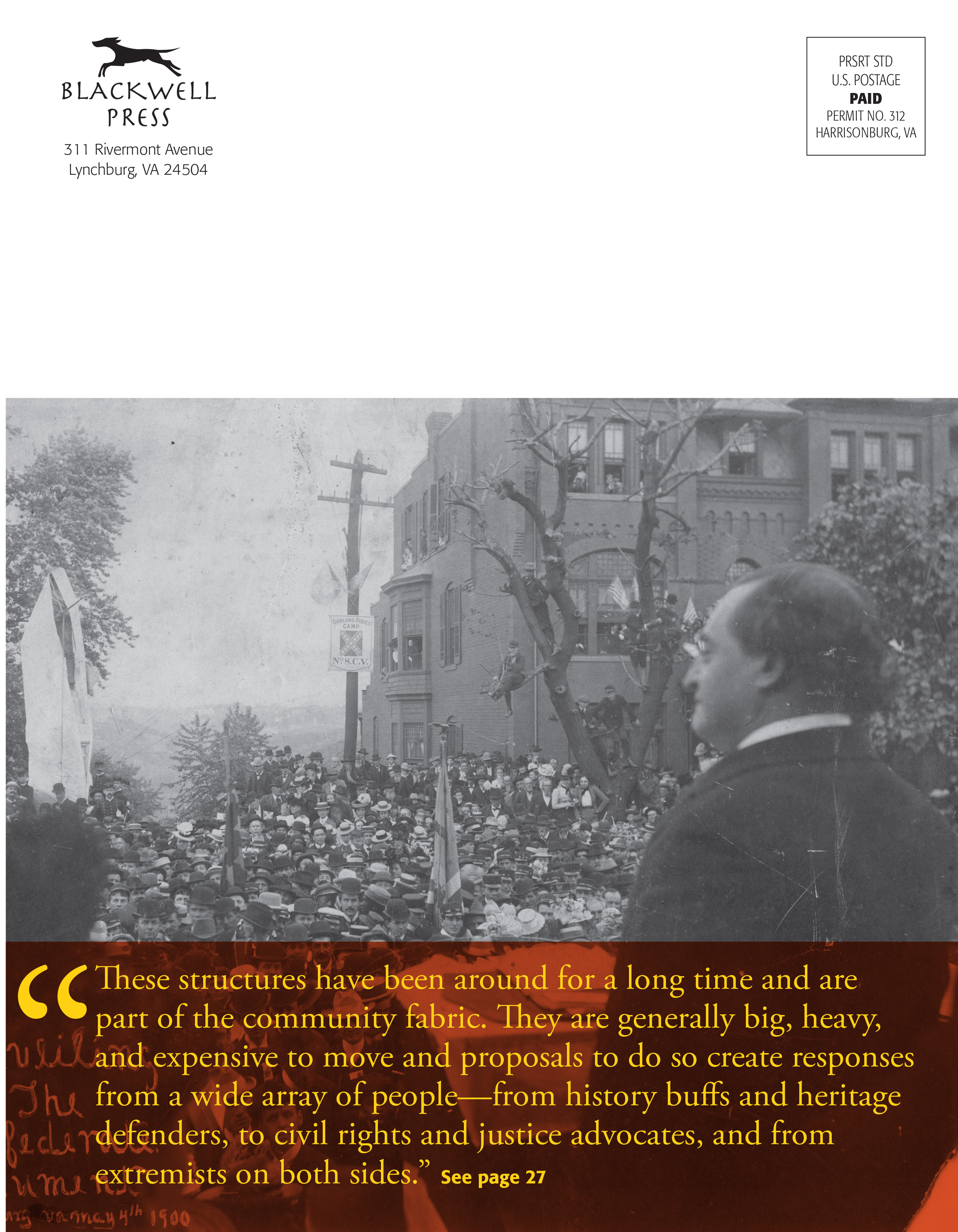Fall 2018


Stanhope Spencer Johnson’s Lynchburg Architectural Legacy
The author has photographed her way up and down the streets of historic districts and dispatched a drone to the top of the award-winning Allied Arts Building—all in an effort to document the life’s work of her favorite architect. Academic researchers and history buffs alike will delight in the number of rarely seen drawings—both architectural plans and renderings—Frazier has pulled from the archives to highlight Stanhope S. Johnson’s talent, knowledge, and versatility.
Should They Stay, or Should They Go?
In 2016 the Southern Poverty Law Center published a study called “Whose Heritage?” that identified Virginia as having the most Confederate symbols in public places with an approximate total of 233, of which Lynchburg has its share. During his tenure, former city manager Kimball Payne saw the Jubal Early monument destroyed and rebuilt twice. In this article, he asks the question: “If the Jubal Early monument was destroyed again tomorrow, or a few months from now, or next year, what do you think would happen?”
The Riverside Town of Bethel on Salt Creek
Today, the stretch of the James River between the Reusens and Peddlar Dams is known primarily as a recreational spot, featuring the Monacan Park boat ramp located in the Elon section of Amherst County. But, as the author reveals, the place has a vibrant past—a history populated with memorable individuals and families, some with descendants still living—and prospering—in the area.
The Temptations Are Coming!
In the summer of 1967, the Motown sound was still “going strong around Lynchburg. The radio blasted out music by groups like Sam and Dave, the Four Tops, the Supremes, Wilson Pickett, Otis Redding, Smokey Robinson, and James Brown.” The author’s “favorite group, however, was the Temptations.” He was not alone. The E. C. Glass auditorium was packed with fans “excited and swaying” when something went terribly wrong.
The author has photographed her way up and down the streets of historic districts and dispatched a drone to the top of the award-winning Allied Arts Building—all in an effort to document the life’s work of her favorite architect. Academic researchers and history buffs alike will delight in the number of rarely seen drawings—both architectural plans and renderings—Frazier has pulled from the archives to highlight Stanhope S. Johnson’s talent, knowledge, and versatility.
Should They Stay, or Should They Go?
In 2016 the Southern Poverty Law Center published a study called “Whose Heritage?” that identified Virginia as having the most Confederate symbols in public places with an approximate total of 233, of which Lynchburg has its share. During his tenure, former city manager Kimball Payne saw the Jubal Early monument destroyed and rebuilt twice. In this article, he asks the question: “If the Jubal Early monument was destroyed again tomorrow, or a few months from now, or next year, what do you think would happen?”
The Riverside Town of Bethel on Salt Creek
Today, the stretch of the James River between the Reusens and Peddlar Dams is known primarily as a recreational spot, featuring the Monacan Park boat ramp located in the Elon section of Amherst County. But, as the author reveals, the place has a vibrant past—a history populated with memorable individuals and families, some with descendants still living—and prospering—in the area.
The Temptations Are Coming!
In the summer of 1967, the Motown sound was still “going strong around Lynchburg. The radio blasted out music by groups like Sam and Dave, the Four Tops, the Supremes, Wilson Pickett, Otis Redding, Smokey Robinson, and James Brown.” The author’s “favorite group, however, was the Temptations.” He was not alone. The E. C. Glass auditorium was packed with fans “excited and swaying” when something went terribly wrong.
^ Top
Previous page: The 1917 Lynchburg “Shoemakersâ€
Next page: Stanhope Spencer Johnson’s Lynchburg Architectural Legacy
Site Map




